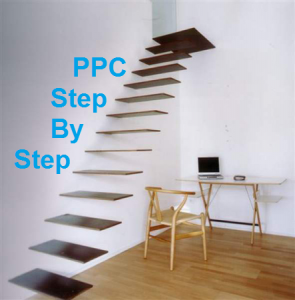A PPC Campaign Step by Step for Publishers 26 Jan 2012
Yesterday, I went through the steps advertiser would have to perform when creating a campaign in PPC programs such as AdWords. This is by far the most important aspect to PPC. However, it is also important to know how the publishing side to PPC works. Here is an article explaining what a publisher has to when creating a campaign.
article explaining what a publisher has to when creating a campaign.
Publisher
A publisher will join a PPC program to primarily make it a source of income from the content on his or her’s site. The most used PPC program by publishers out there is Adsense from the way it has the widest selection of advertisers to bid on keywords with payments made in any currency. As well as that, it’s Google. It’s a recognised worldwide brand for being safe and trustworthy, unlike other brands.
The first step an advertiser will have to do is sign up with the PPC program. This can take between 1-14 days depending on the level of demand the PPC program have. They do this in order to stop inappropriate sites from showing the PPC program’s ads on their website. After the publisher has been accepted, he is free to implement the adverts onto his website.
Just like with advertising using PPC, a big part of the publisher side to PPC is optimizing and customizing. What advert size will best suit the page layout? What colours produce the highest CTR? Questions like these are continually asked by the publisher because they will want to make the most amount of money from the traffic their website gains.
To start off with, the publisher will place the HTML code for the advert in the area of his/her website where he/she wants the adverts to appear. This is a problem all ready as the code is usually a ‘<script>’ which means anyone that uses ad blockers won’t be able to see the ad and click on it reducing earnings made. Day by day, a publisher will look at his earnings, analyse them and attempt to improve his adverts in a number of ways:
- Ad Placement – Different areas of a website produce different CTRs. It is good to experiment to see what area of your website makes you the most money.
- Ad Size – When Adsense was first created, everyone used the long 120/160×600 adverts. However, as technology changes, so do the ad preferences. The best advert sizes to use are the more square ads such as the 300×250 or the 336×280 ad.
- Ad Colour – Different colours communicate different messages to the reader and therefore produce different CTRs. For example, red is a warning colour while purple is a colour of wealth-fare and of the rich (you would never have thought that!).
- Ad Types – There are three options you can choose as an publisher using Adsense. Text only, image only or text and image. Each ad type produces different results. Again, the publisher will experimental to see which one is the most successful.
- Ad Categories – The publisher will be able to choose the type of advertisers that show their adverts oo his/her site. For example, a tech/geeky site won’t want adverts about jewellery. So, the publisher blocks the category of ‘jewellery’.
After that, the publisher will be able to put his feet up and relax! Once he has optimised his adverts on his website, he will then leave them to let the readers become use to them. So there we have it. A break down of the publisher’s point of view for a PPC campaign. There are similarities to the advertiser’s perspective such as the ‘trial and error’ technique. However, once a publisher has created it, there’s not much more he really needs to do, unlike advertisers.
Will Green
Will created Ask Will Online back in 2010 to help students revise and bloggers make money developing himself into an expert in PPC, blogging SEO, and online marketing. He now runs others websites such as Poem Analysis, Book Analysis, and Ocean Info. You can follow him @willGreeny.
|
Recommended posts
|

